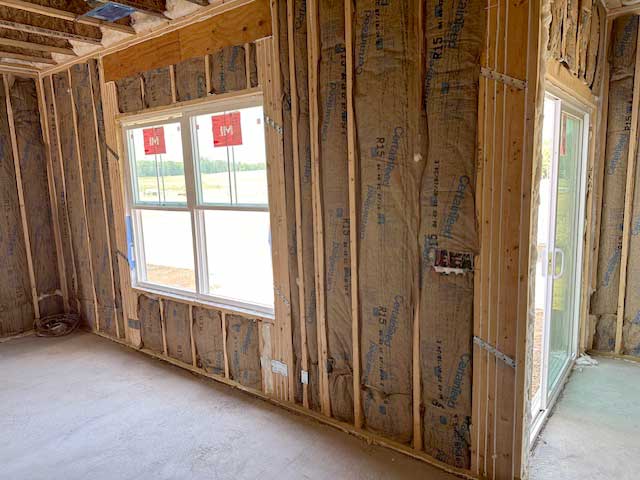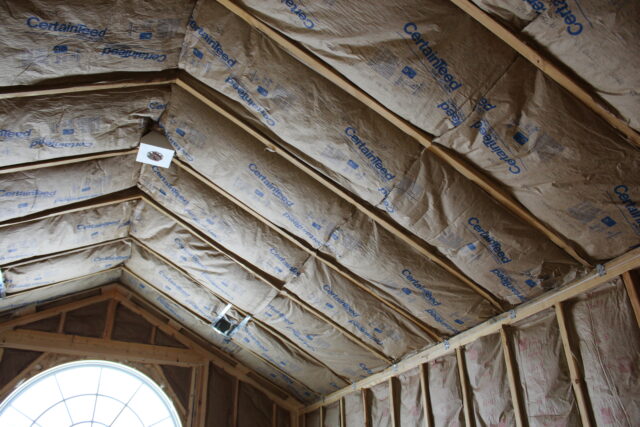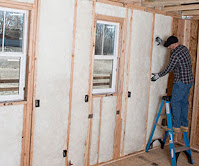Batt Insulation in Virginia: A Homeowner and Builder’s Guide
When people think about insulation, batt insulation is often the first type that comes to mind. Batt insulation is a cost-effective insulation solution that has been used for decades in Virginia homes and buildings. It consists of pre-cut sheets of blanket insulation made from fiberglass or mineral wool, designed to fit snugly between wall studs, ceilings, floors, and attics. With Virginia’s mix of cold winters and hot, humid summers, choosing the right insulation material is essential for year-round comfort and energy efficiency.
What Is Batt Insulation?
 Batt insulation, sometimes called blanket insulation, refers to flexible mats that are designed to fit between standard framing cavities. This type of insulation remains one of the most widely used and trusted options.
Batt insulation, sometimes called blanket insulation, refers to flexible mats that are designed to fit between standard framing cavities. This type of insulation remains one of the most widely used and trusted options.
The effectiveness of batt insulation is measured by its R-value—the higher the R-value, the greater the insulating power. According to building codes and Energy.gov, Virginia homes should meet these recommended R-values:
- Attics: R-49 to R-60
- Walls: R-13 to R-15
Meeting these standards helps lower energy bills and increase comfort in every season.
Faced vs. Unfaced Batt Insulation
Batt insulation can be purchased either with facing (known as kraft-faced batts) or unfaced. The facing serves as a vapor retarder, limiting the amount of moisture that passes through your walls.
- Faced batts: Best for areas where a vapor barrier is required by Virginia building codes (typically on the warm-in-winter interior side).
- Unfaced batts: Used when no vapor barrier is needed, or when a separate vapor barrier will be installed.
Important tip: Never install two vapor barriers, as this can trap moisture and cause mold growth. For Virginia’s climate, one interior vapor-retarding layer is sufficient.
Where to Use Batt Insulation
One reason batt insulation is a popular choice is its versatility. It can be used in nearly every part of a home or building:
- Walls
- Ceilings
- Attics
- Floors
For open cavities, batts are an excellent choice. For irregular or hard-to-reach spaces, alternatives such as blown-in loose-fill insulation or spray foam insulation may provide better coverage and air sealing.
Getting the R-Value You Paid For: Proper Installation
 Even the best insulation material won’t perform correctly if it’s poorly installed. To maximize the benefits of batt insulation, proper installation is critical:
Even the best insulation material won’t perform correctly if it’s poorly installed. To maximize the benefits of batt insulation, proper installation is critical:
- Batts should fill the cavity snugly without gaps or compression.
- Avoid cramming batts too tightly, as this will reduce R-value.
- Pay attention to gaps around wiring, pipes, and electrical boxes.
- Eliminate voids that could lead to thermal bridging (where heat bypasses the insulation through wood studs).
According to Virginia Tech Extension, improper installation can reduce performance by 30% or more. That’s why professional installation ensures you achieve the energy savings and comfort you expect.
Benefits of Batt Insulation in Virginia Homes
Choosing batt insulation offers several advantages for homeowners and builders:
- Affordability: A cost effective way to insulate most homes.
- Energy savings: Reduces heating and cooling loads, lowering energy bills.
- Versatility: Works in walls, attics, ceilings, and floors.
- Sustainability: Available in natural fibers like mineral wool for eco-conscious projects.
When installed correctly, batt insulation can make a noticeable difference in comfort while keeping your home efficient year-round.
Partner with Southland Insulators
At Southland Insulators, we’ve been helping Virginia homeowners and builders improve energy efficiency for decades. Whether you need to install batt insulation in a new build or upgrade an older home, our experienced team can recommend the right insulation solution and ensure it’s installed properly for maximum performance.
Contact Southland Insulators today to learn how batt insulation can improve your home’s comfort and reduce energy costs.
References
U.S. Department of Energy. (n.d.). Insulation. Energy.gov. https://www.energy.gov/energysaver/insulation
U.S. Department of Energy. (n.d.). Types of insulation. Energy.gov. https://www.energy.gov/energysaver/types-insulation
U.S. Department of Energy. (n.d.). Where to insulate in your home. Energy.gov. https://www.energy.gov/energysaver/where-insulate-home
Virginia Administrative Code. (n.d.). 13VAC5-63-264. Vapor retarders. Virginia Law. https://law.lis.virginia.gov/admincode/title13/agency5/chapter63/section264/

